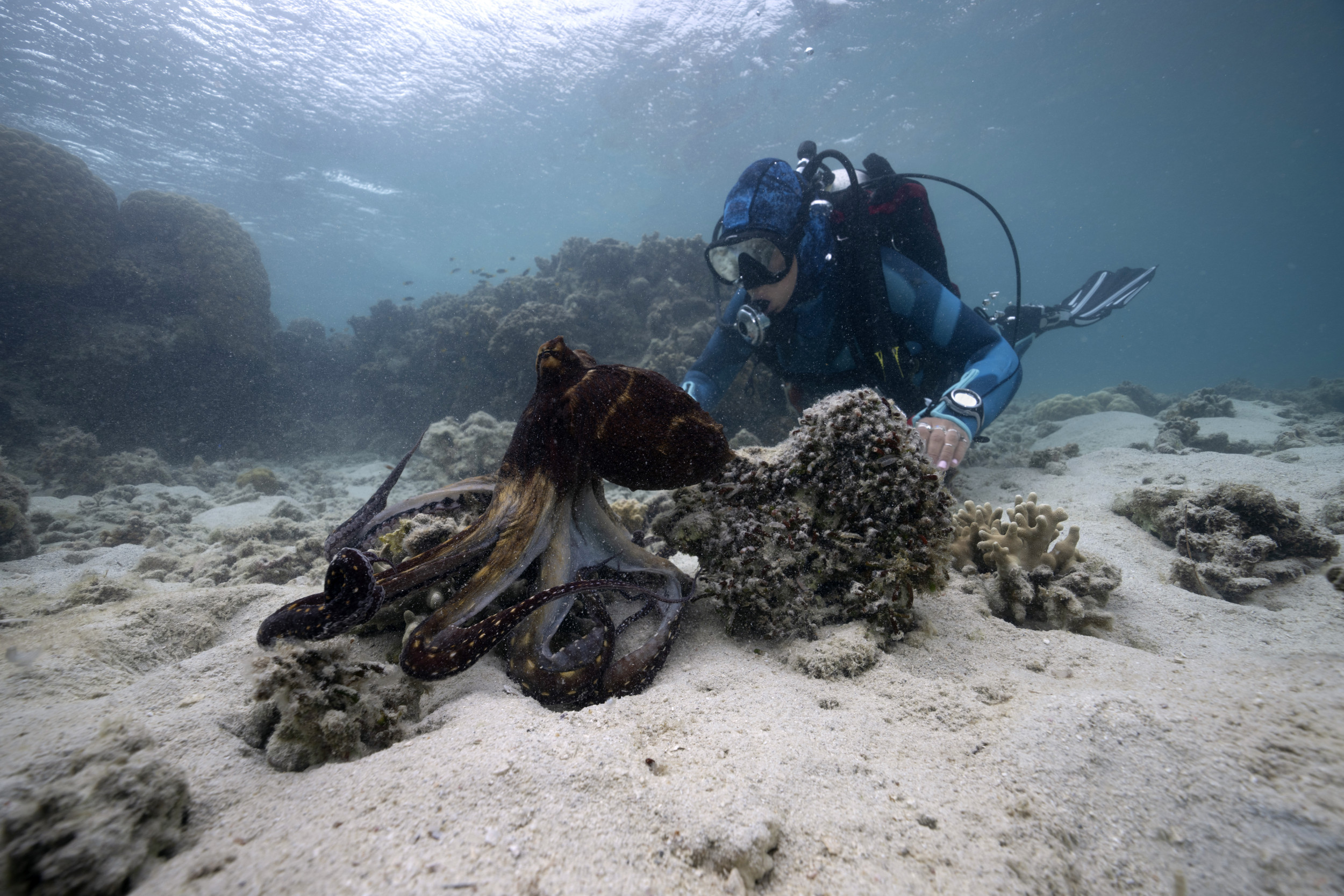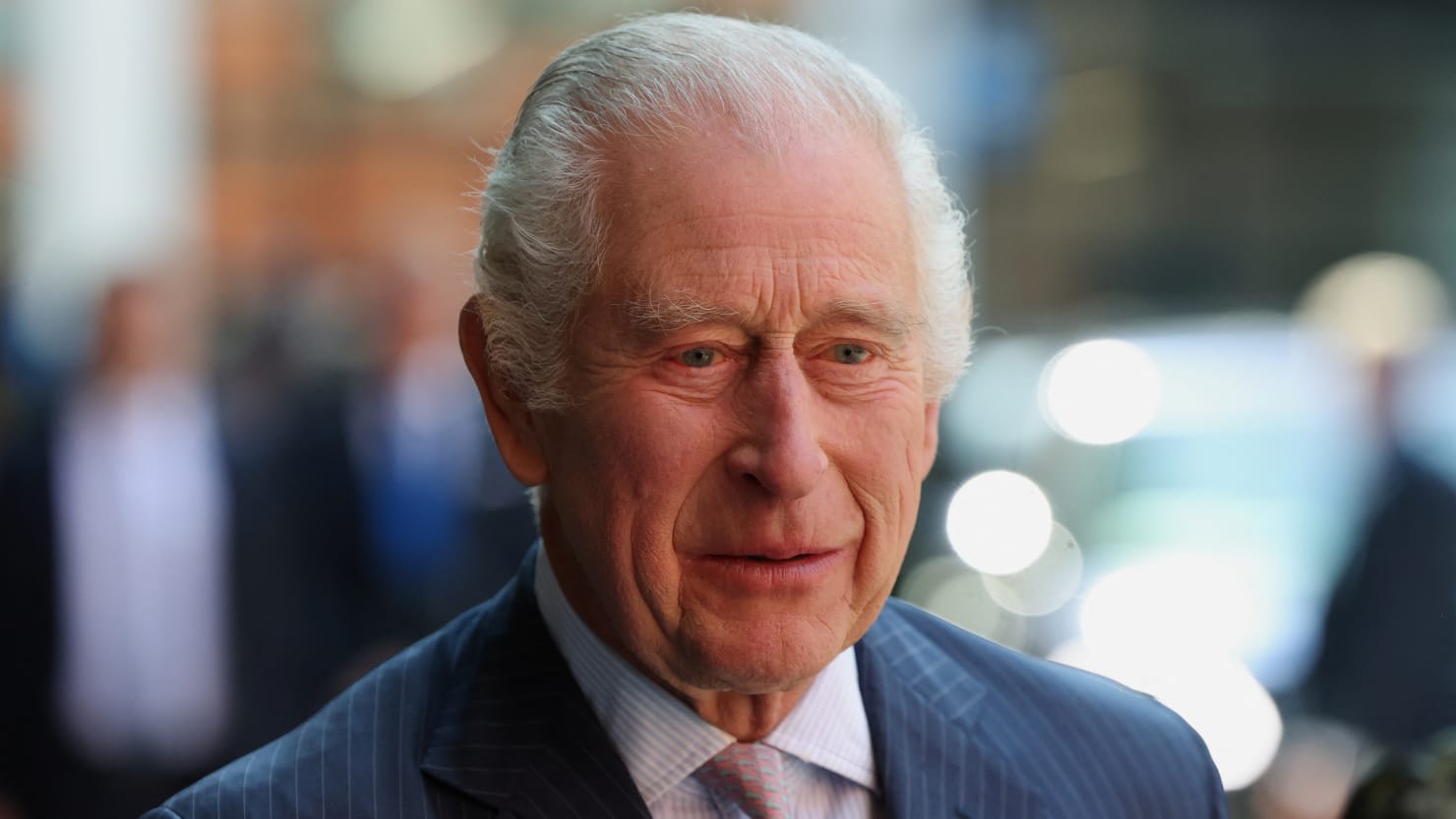Underwater footage of an “incredible” moment shows a marine biologist seemingly communicating with an octopus as she hunts for crabs.
The images, which were shot in the waters of the Great Barrier Reef off the coast of northeastern Australia, come from an upcoming National Geographic documentary series “Secrets of the Octopus”.
The three-part series, produced by filmmaker James Cameron and narrated by actor Paul Rudd, follows marine biologist Alex Schnell as she investigates the secret lives of these extraordinary and elusive creatures, whose significant intelligence is only becoming more apparent.
“Cephalopods [the animal group that contains octopuses, squid and related creatures] were always a point of interest from a very young age,” Schnell told Newsweek. “They’re just so alien—they have three hearts that pump blue blood, no bones, and skin that can change color in an eye-blink. But within this really strange framework, we’re seeing glimmers of intelligence that we might normally expect to see in, say, dolphin chimpanzees or elephants.”
Craig Parry/National Geographic
For the filming of the series, the team spent two years and nearly 1,500 hours underwater, documenting octopus behavior in 10 different locations across five countries, including Canada, Indonesia, Australia, Brazil and Turks and Caicos.
As Schnell immersed herself into their world, gaining the trust of and even forging bonds with the individuals she came across, the team was able to capture rare and never-before-seen octopus behavior on film.
Among these achievements, the film crew captured what they say is the first footage of an octopus in the wild experiencing a state that appeared to resemble rapid eye movement sleep, which is often associated with dreaming.
The team also captured fascinating footage of a male octopus using color in an elaborate courtship behavior with a female, as well as a scene where a coconut octopus used its shell as a shield in combat with an aggressive mantis shrimp—another filming first.
But one of the most intriguing moments of the series involved an octopus in the Great Barrier Reef that the team nicknamed Scarlet. During the filming, Schnell formed a bond with Scarlet—a day octopus—who gave the researcher a glimpse into her world.
The team had already filmed rare footage of interspecies communication and collaborative hunting between coral trout and the day octopus. In this behavior, the fish would do a kind of “headstand” to try and indicate the location of prey to their partner.
“We were able to see rare footage of this interspecies communication and collaborative hunting, with the octopus understanding that this coral trout was doing a headstand to indicate where a crab was hiding,” Schnell said.
Outside of humans, referential gesturing and pointing, designed to draw the attention of a viewer to something of mutual interest, had generally only been documented by scientists in great apes until relatively recent decades. But since then, it has been observed in a diverse range of species, including large-brained birds like ravens, but also some fish.
“They don’t have hands so they can’t point but they do a headstand to try and indicate hidden prey to their cooperative partner,” Schnell said. “Now, some of their partners include giant moray eels, and different types of fish, but also the day octopus. It was very rare to see that sort of behavior.”
After witnessing the octopus hunting with the fish, Schnell said she had a “crazy” idea. While following Scarlet hunting one day, the researcher wondered if the octopus would respond to her if she pointed to the location of a particular crab that she missed.
“She let me get super close and I could see that as she was putting her arms underneath the coral rubble crabs would swim out and escape her grasp. So I just randomly started to point to where these crabs would go and she immediately responded,” Schnell said. “It was just a really incredible moment. We don’t know the intricacies of this type of communication. This is just the first step, but it would be a really interesting avenue to further investigate.”
“It was just one of those experiments that you get this crazy idea. And to be honest, a lot of research science starts with crazy ideas.”
The marine biologist subsequently realized in conversations with naturalist Sy Montgomery, who has written a companion book to the series, that she had documented people having similar experiences in a lab setting.
“They would point to a food item in the tank that the octopus couldn’t see. And the octopus would respond by swimming over and looking for food there,” Schnell said.
“Maybe she preferred me as a hunting partner,” the biologist says in the video clip from the series. “I was playing the role of the fish but I wasn’t taking any of her catch. It felt weird and wonderful to be having this interaction with Scarlet. Here we are separated by over 550 million years of evolution but we’re having a conversation. It just felt like magic.”
The new series premieres Sunday, April 21, at 8 p.m. ET on National Geographic and is then available from April 22 on Disney+ and Hulu.
Uncommon Knowledge
Newsweek is committed to challenging conventional wisdom and finding connections in the search for common ground.
Newsweek is committed to challenging conventional wisdom and finding connections in the search for common ground.

Laura Davis is an entertainment aficionado who delves into the glitz and glamour of the entertainment industry. From Hollywood to Broadway, she offers readers an insider’s perspective on the world of movies, music, and pop culture.






